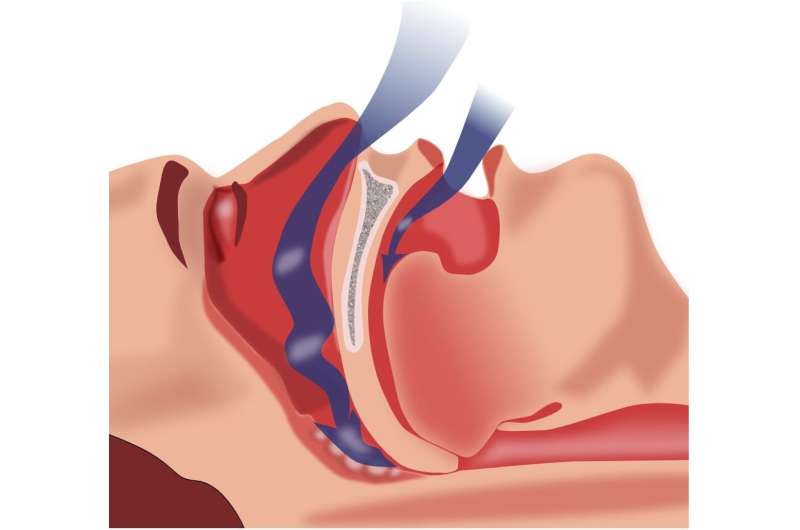This article has been reviewed according to Science X's editorial process and policies. Editors have highlighted the following attributes while ensuring the content's credibility:
fact-checked
peer-reviewed publication
proofread
Research reveals promising approach to enhance treatment for sleep apnea-related issues

A study published in the American Journal of Respiratory and Critical Care Medicine provides new insights into the treatment of obstructive sleep apnea (OSA) and its associated health impacts.
Researchers at the University of Missouri School of Medicine and the Marshall University Joan C. Edwards School of Medicine, led by David Gozal, M.D., M.B.A., Ph.D. (Hon), vice president of health affairs at Marshall University and dean of the Joan C. Edwards School of Medicine, have explored innovative therapeutic strategies that could greatly advance the understanding and management of OSA-related morbidities.
Obstructive sleep apnea is a widespread condition affecting nearly one billion people around the world. It is linked to accelerated biological aging and various end-organ health issues, such as cardiovascular, cognitive and metabolic morbidities. While current treatments like continuous positive airway pressure (CPAP) have demonstrated limited success in reversing such outcomes, this recent research delves into adjunct therapies, particularly the use of senolytics, to alleviate the burden of OSA.
The study assessed whether targeting senescence, a treatment that targets aging cells, coupled with a simulated approach that imitates good adherence to the most common treatment for sleep apnea (CPAP) could improve physiological outcomes in mice exposed to chronic intermittent hypoxia (IH), a hallmark feature of OSA.
The study found that combining partial normoxic recovery with the senolytic Navitoclax (NAV) significantly reduced sleepiness during the dark phase, the usual sleeping time for rodents. The combined therapy also showed notable improvements in cognitive function. Such findings were not apparent when only CPAP was administered.
"Our findings suggest that the reversibility of end-organ morbidities induced by OSA goes beyond normalizing oxygenation patterns," said Gozal, corresponding author on the study. "Targeting accelerated senescence appears to be a promising avenue for improving treatment outcomes in individuals with OSA."
"It is quite evident in our preclinical model of OSA that recovering normal oxygenation patterns seen in traditional treatments, namely continuous positive airway pressure, is ineffective in preventing or mitigating multiple end-organ dysfunctions," said Mohammad Badran, Ph.D., assistant professor at the University of Missouri School of Medicine. "Adjuvant therapies, in this case senolytics, have the potential of becoming valuable and effective treatments targeting OSA-induced morbidities."
In addition, the therapy demonstrated positive effects on coronary artery function, glucose and lipid metabolism and reduced intestinal permeability. The combination of simulated adherent CPAP treatment and NAV effectively reduced senescence in multiple organs, indicating a potential reversal of OSA-induced cellular aging processes.
This research could open new doors in understanding the deleterious processes involved in OSA-associated morbidities and formulate novel approaches aimed at reversing the multifaceted impact of OSA on health. Development of safe senolytics specifically focused on OSA along with clinical studies are warranted to validate these findings in human subjects and explore potential applications in the field of sleep medicine.
In addition to Gozal and Badran, co-authors on the study from the University of Missouri include Clementine Puech, Ph.D., post-doctoral fellow; Abdelnaby Khalyfa, Ph.D., associate professor; Rene Cortese, Ph.D., assistant professor in the Department of Child Health and the Department of Obstetrics, Gynecology and Women's Health; Kylie Cataldo, research specialist; and Zhuanhong Qiao, senior research consultant.
More information: Mohammad Badran et al, Senolytic-facilitated Reversal of End-Organ Dysfunction in a Murine Model of Obstructive Sleep Apnea, American Journal of Respiratory and Critical Care Medicine (2023). DOI: 10.1164/rccm.202306-1101OC


















